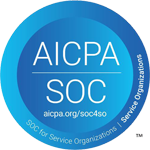When you are looking into long-term care options for seniors in Ohio, understanding the eligibility criteria is step one in ensuring health coverage. This guide outlines the key Medicaid in Ohio eligibility requirements for seniors, age 65 and over, the financial and medical requirements, how to apply, and what strategies might help you qualify if your income and assets exceed the limits. Whether you're planning ahead or facing immediate care needs, this information from the experts at Senior Planning can help you navigate the process with confidence.

Finding the Right Medicaid Program for Seniors in Ohio
Medicaid is a state and federally funded program that helps low-income individuals access healthcare and long-term care services. In Ohio, this is administered by the Ohio Department of Medicaid (ODM). For seniors looking for long-term care, the following services can provide support for nursing home care, home and community-based services, and additional assistance to help older people remain in their homes.
-
Institutional/Nursing Home Medicaid: This is an entitlement program that ensures eligible individuals receive assistance while residing in nursing home facilities.
-
Medicaid Waivers/Home and Community-Based Services (HCBS): These services are provided at home or in an assisted living setting with the goal of preventing nursing home placement.
-
Regular Medicaid/Aged, Blind, or Disabled (ABD): This is another entitlement program that assists eligible individuals in accessing long-term care, such as personal care assistance or adult day care.
Ohio Medicaid Eligibility Requirements
Who is eligible for Medicaid in Ohio? To qualify for Medicaid in Ohio, seniors must meet the requirements for income, assets, residency, and medical need. This includes being a U.S. citizen or a qualified non-citizen, aged 65 or older, and a resident of the state of Ohio.
Please note that the requirements vary according to the program and are subject to change.
Ohio Medicaid Income Limits for Seniors 2025
The chart below provides the income limit for Ohio. This varies according to the Medicaid program and the individual's marital status.
Medicaid Eligibility Income Chart
|
Single |
Married (both applying) |
Married (one spouse applying) |
|
|
Institutional/Nursing Home Medicaid |
$2,901 per month |
$5,802 per month |
$2,901 per month |
|
Medicaid Waivers/Home and Community Based Services |
$2,901 per month |
$5,802 per month |
$2,901 per month |
|
Regular Medicaid/Aged Blind and Disabled |
$967 per month |
$1,450 per month |
$1,450 per month |
Income considered in Medicaid’s limit includes most forms of monetary income, such as wages, pensions, Social Security benefits, IRA/401(k) distributions, and dividend income.
For married couples, where only one spouse is applying for Nursing Home Medicaid or a Medicaid Waiver, only the income of the applicant is considered towards this limit. Additionally, the non-applicant spouse may be entitled to a Minimus Monthly Maintenance Needs Allowance (MMMNA). For Regular Medicaid, the income of both spouses is calculated towards the limit regardless of whether one or both spouses are applying.
Ohio Medicaid Asset Limits 2025
The chart below provides the asset limit for Ohio. This varies according to the Medicaid program and the individual's marital status.
|
Single |
Married (both applying) |
Married (one spouse applying) |
|
|
Institutional/Nursing Home Medicaid |
$2,000 |
$3,000 |
$2,000 for the applicant and $157,920 for the non-applicant |
|
Medicaid Waivers/Home and Community Based Services |
$2,000 |
$3,000 |
$2,000 for the applicant and $157,920 for the non-applicant |
|
Regular Medicaid/Aged Blind and Disabled |
$2,000 |
$3,000 |
$3,000 |
Assets included towards the eligibility limit include cash, bank accounts, investments, and real estate, excluding the primary home. Assets that are generally not considered include the primary residence, a car, household furnishings, and certain burial costs.
Medicaid’s Look Back Rule: Medicaid in Ohio has a 60-month look-back period for Nursing Home Medicaid and Home and Community-Based Medicaid programs. During this time, all transfers made within the 5 years preceding the application are assessed to confirm that no assets were sold or gifted for under market value. This process verifies that no transfers were made to meet the Ohio Medicaid eligibility requirements.
How to Qualify if You Exceed the Limits
If your income or asset limit exceeds the Medicaid limit, there are ways you can still qualify. This includes:
Qualified Income Trusts (QITs)
Establishing a QIT, or Miller Trust, allows individuals whose income is too high to deposit their “excess” income into a trust. This is then exclusively used for specific purposes, such as paying medical expenses.
Asset Spend Down
This allows individuals to use excess assets for allowable expenses, such as home accessibility modifications or paying off debt.
Medicaid Planning
Working with a Medicaid Planning Professional to structure finances in ways that help meet eligibility, while complying with look-back rules.
How to Apply for Medicaid in Ohio for The Elderly
Applying for Medicaid coverage for seniors in Ohio shouldn’t be overwhelming. Contact Senior Planning to make the application process as smooth and stress-free as possible.
-
Choose a Medicaid Program: For seniors in Ohio, there are various Medicaid programs for long-term care, each with its own benefits.
-
Check Eligibility Requirements: Confirm the asset and income limit of your selected Medicaid program to ensure you are eligible to receive coverage.
-
Gather Necessary Documents: To verify your eligibility, various documents are required, including proof of age, residency, citizenship, income statements, asset statements, and health care needs. Check out our complete checklist of documentation required for Medicaid in Ohio to learn more.
-
Complete the Application: Complete and submit the application online through Ohio Benefits or in person at a local county Job and Family Services office.
Ohio Medicaid Eligibility for Nursing Homes
Medicaid in Ohio considers an individual's income and assets when determining nursing home eligibility. According to Ohio Medicaid rules for nursing homes, in some instances, the full cost may be covered, while in other cases, your income is used to offset nursing home expenses, and Medicaid covers the remaining balance.
It is also important to verify availability in the nursing home of your choice. Not all nursing homes accept Medicaid, and some may have a limited number of beds, which can result in waitlists.
Does Medicaid Pay for Assisted Living in Ohio?
Medicaid offers programs in Ohio to help cover the costs of assisted living for seniors who meet specific medical and financial requirements. Assisted living in Ohio offers seniors a supportive environment that allows them to maintain as much independence as possible while receiving assistance with daily activities, such as bathing, dressing, medication management, and meal preparation. This provides seniors with an alternative to nursing home facilities.

Programs and Trusts in Ohio
Medicaid in Ohio offers several programs and trusts to support seniors residing in their homes and the community. This includes:
-
PASSPORT Waiver: PASSPORT (Pre-Admission Screening System Providing Options and Resources Today) ensures seniors receive long-term care services and support. This includes adult day care, home care, and home accessibility modifications.
-
Assisted Living Waiver: This program assists adults aged 21 and over to live in residential care facilities and assisted living residences. This waiver covers care services, but not room and board.
-
MyCare Ohio: For individuals who are eligible for Medicaid and Medicare, benefits through the MyCare Ohio program include adult day care, assisted living services, and medical response systems.
-
Program of All-Inclusive Care for the Elderly (PACE): PACE combines Medicaid and Medicare benefits into a single program that includes additional benefits, such as dental care and eye care.
-
Money Follows the Person (MFP): The MFP program helps individuals transition from an institution back into the community. This is also referred to as HOME Choice.
Ohio Medicaid Long-Term Care Eligibility Support
Are you looking for help with the Ohio Medicaid application process for long-term care? Senior Planning is here to assist seniors and their families every step of the way. We ensure that you or your loved one receives the care needed. Contact Senior Planning today to get started with your application.
Frequently Asked Questions about Ohio Medicaid Eligibility for Seniors
Am I eligible for Medicaid in Ohio?
To be eligible for Medicaid in Ohio, you must meet the following requirements:
-
Resident of Ohio
-
U.S. citizen or qualified non-citizen
-
Age 65 or over (or blind/disabled for specific categories)
-
Meet both income and asset limits
-
Meet a medical level of care requirement.
Which Medicaid plan is best in Ohio?
When considering the best Medicaid plan in Ohio, there is no one-size-fits-all answer. However, important considerations include the individual's care needs. For example, HCBS waivers are ideal for home care, while Institutional/Nursing Home Medicaid covers assistance in a nursing home facility.
Does Social Security count as income for Medicaid in Ohio?
Social Security counts as income for Medicaid in Ohio because Ohio uses federal MAGI rules, which include Social Security benefits in total income. Medicaid reviews monthly income, and Social Security retirement and survivor benefits increase the income amount used to determine eligibility. For more information, contact your tax attorney or consult with one of the experts at Senior Planning.

